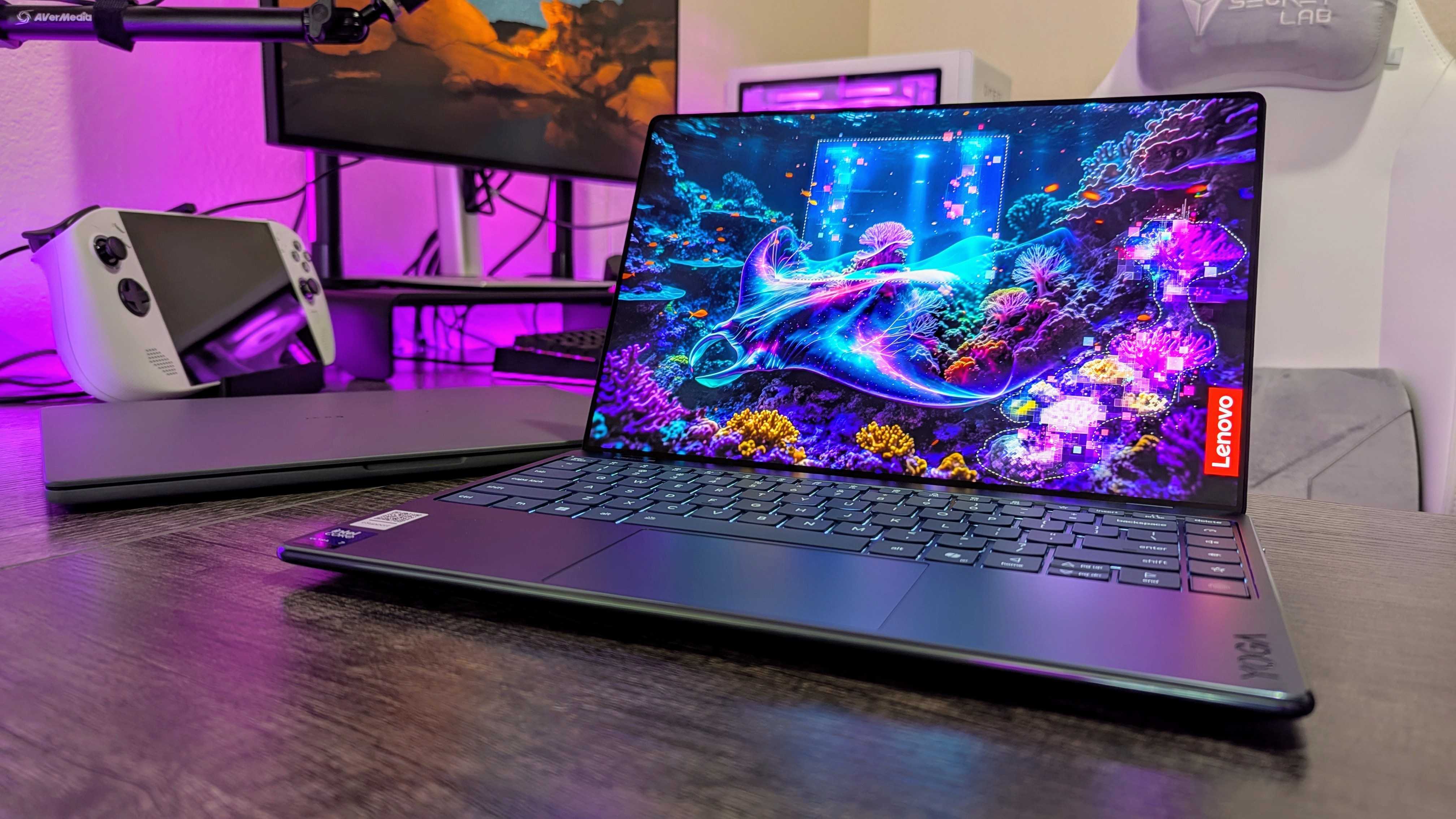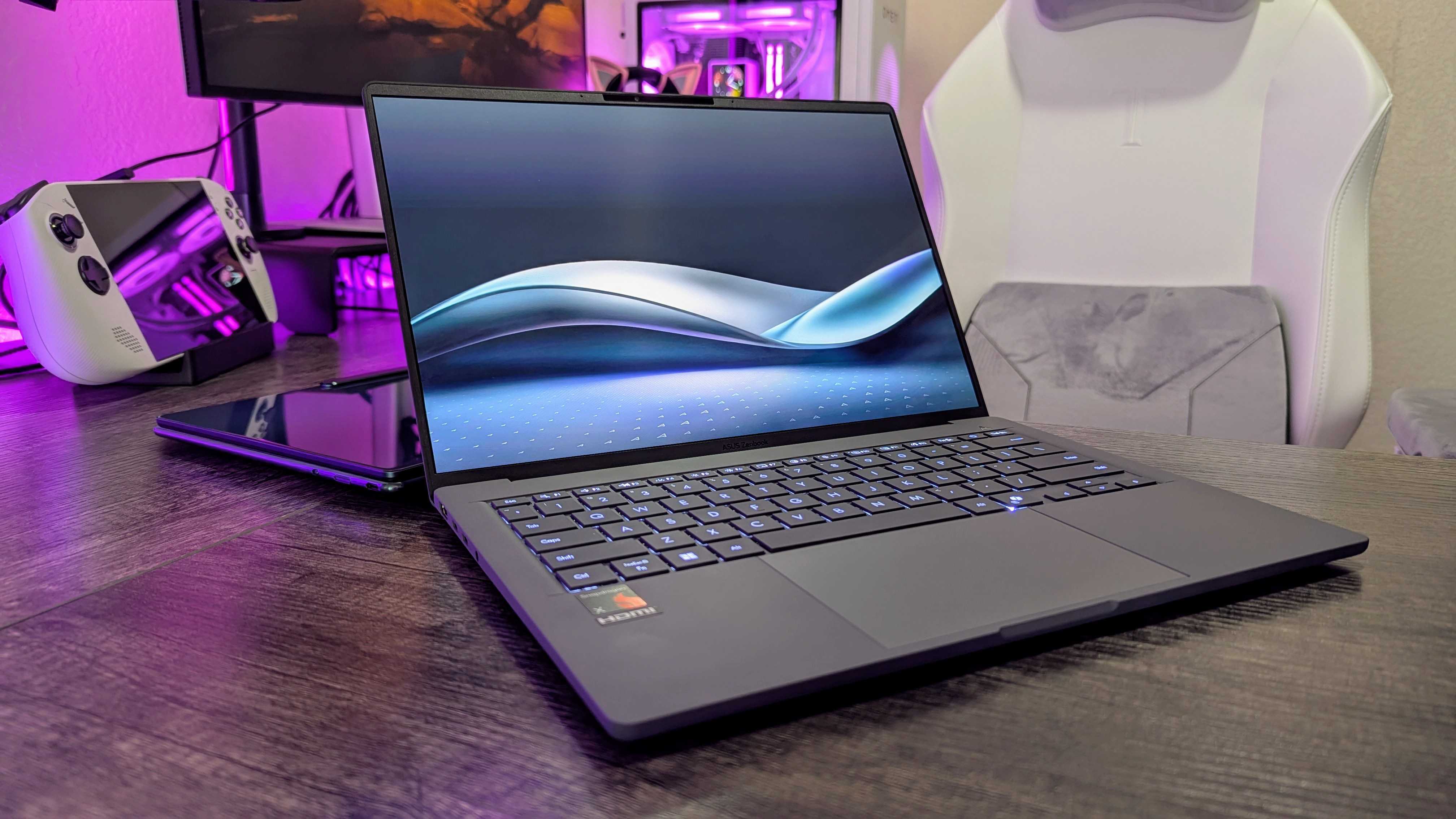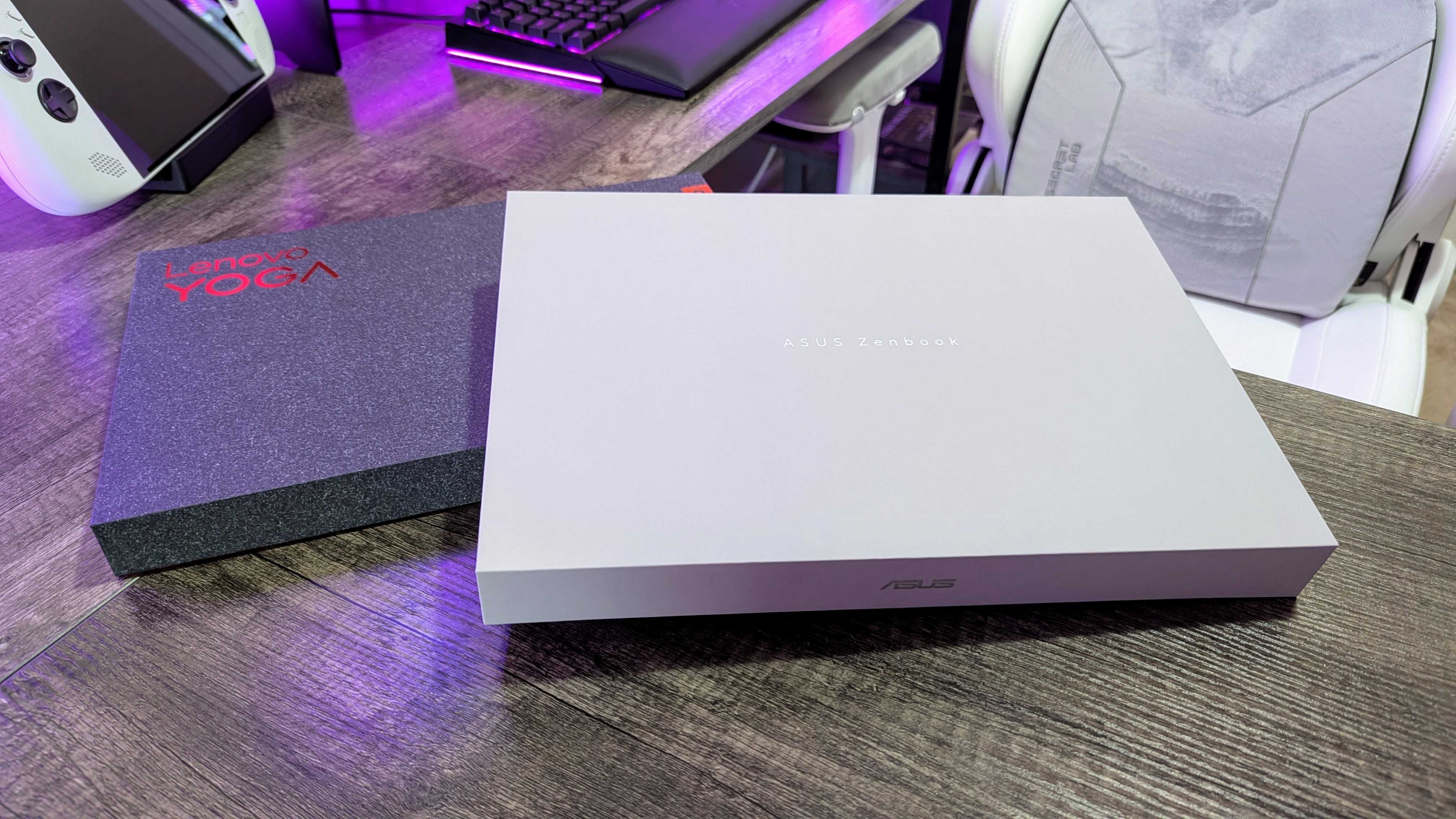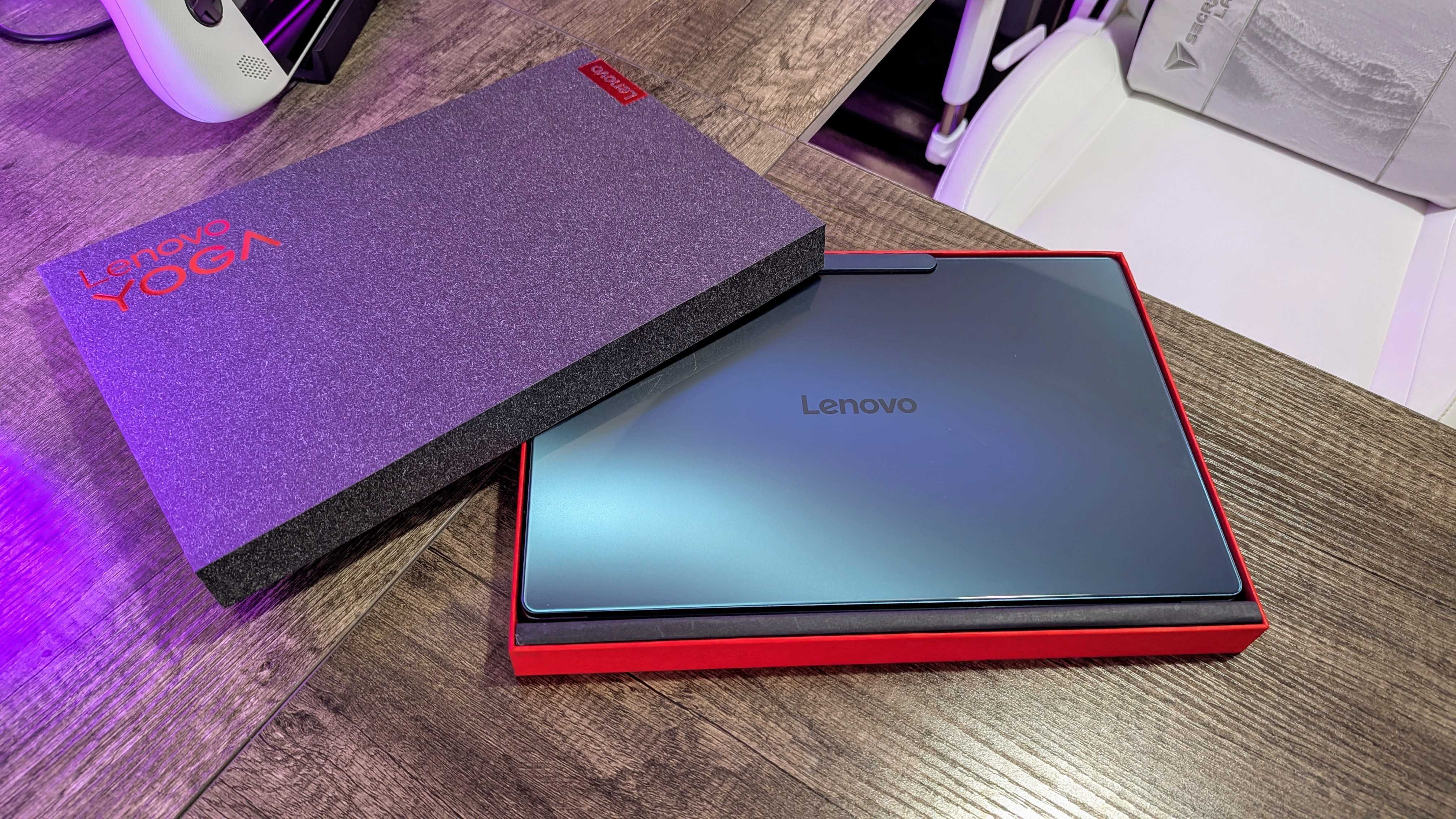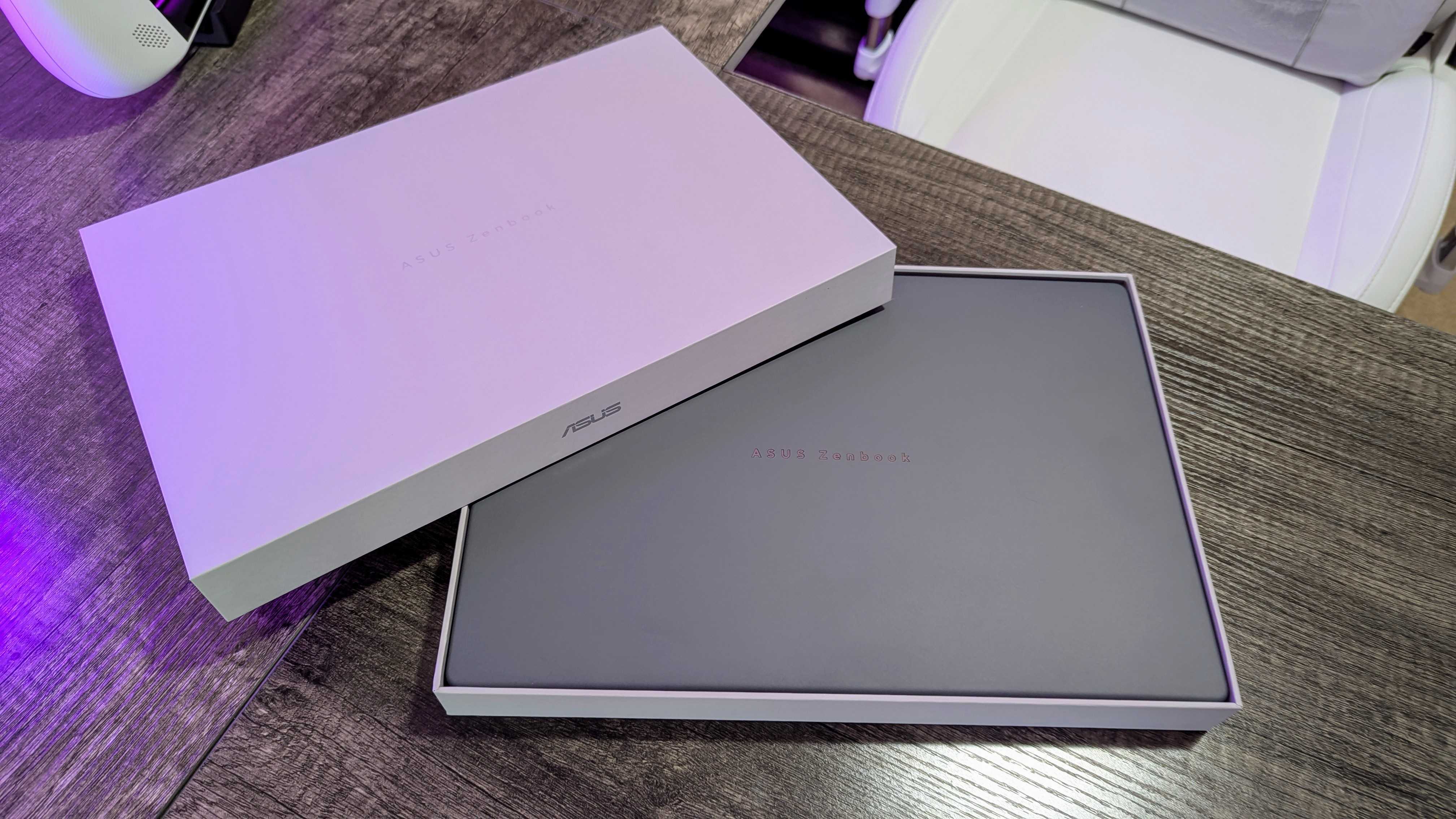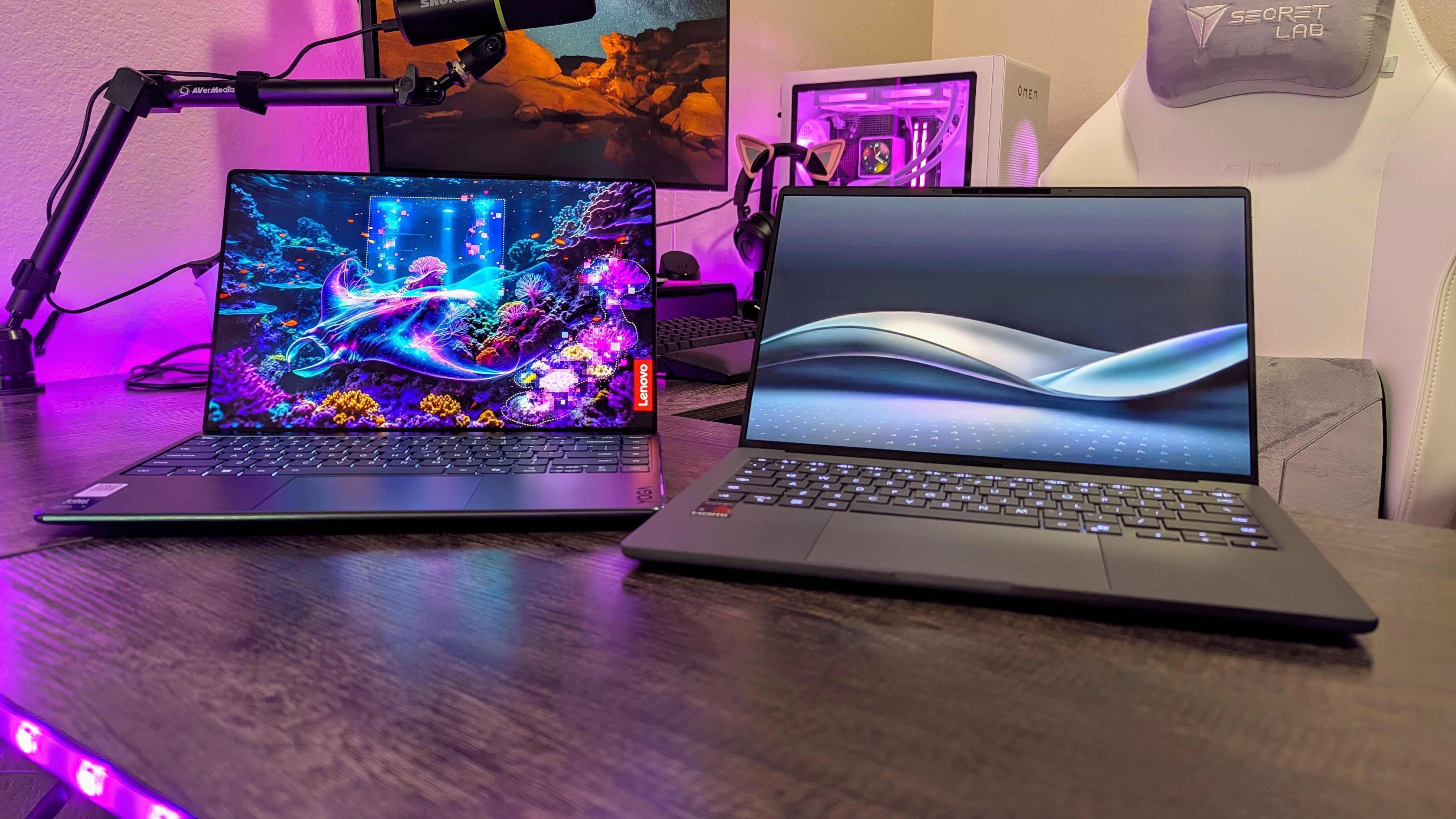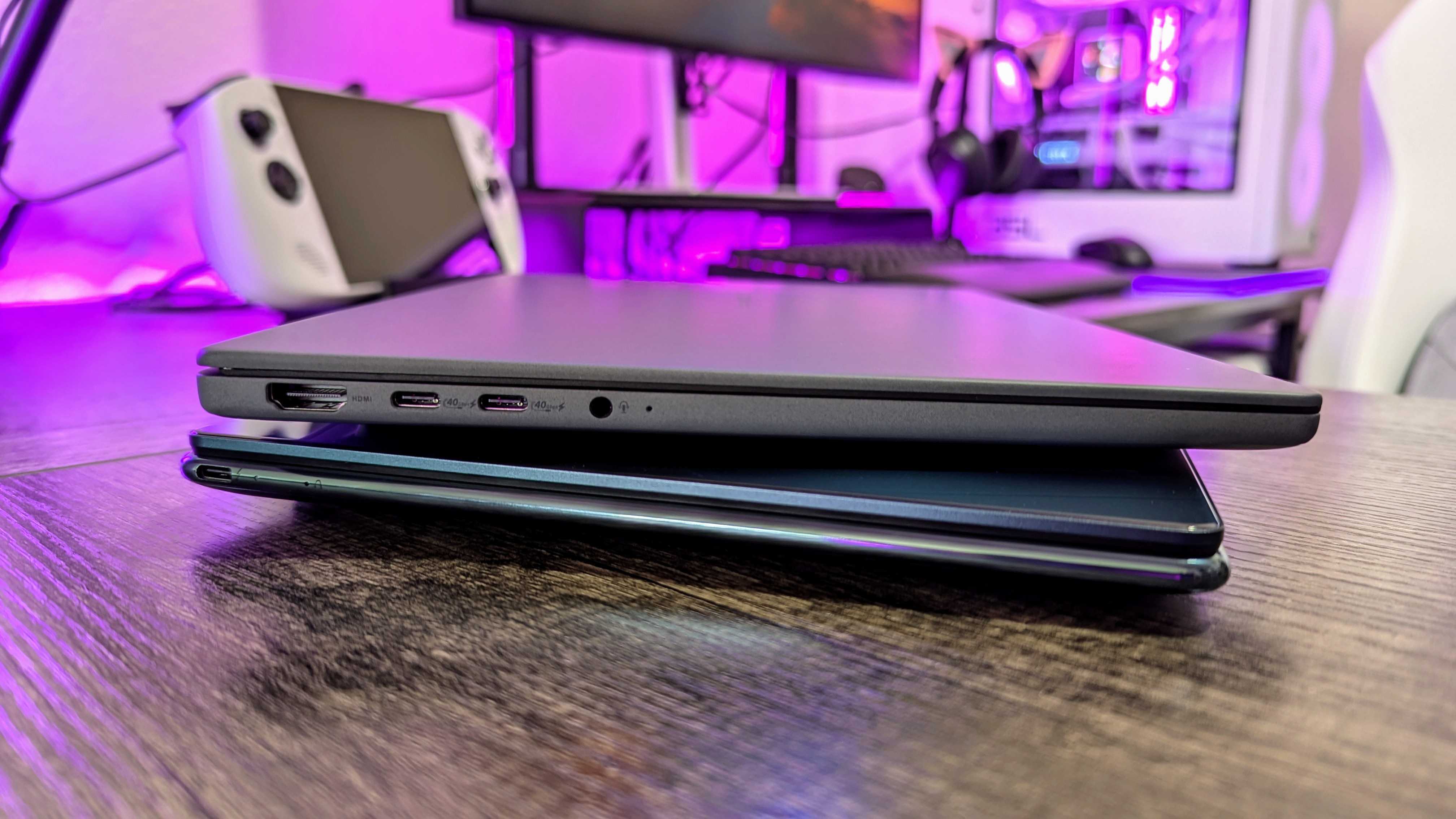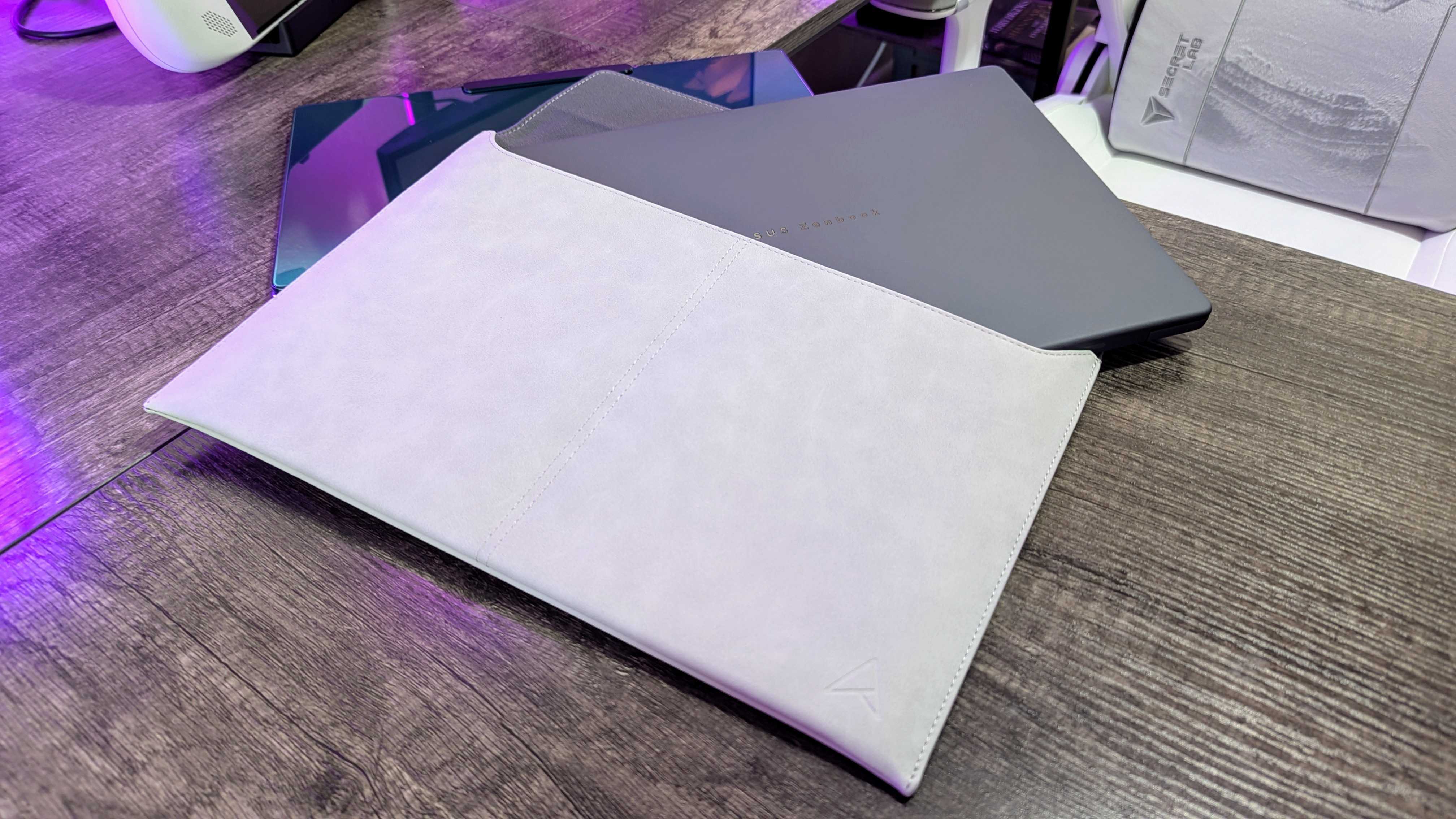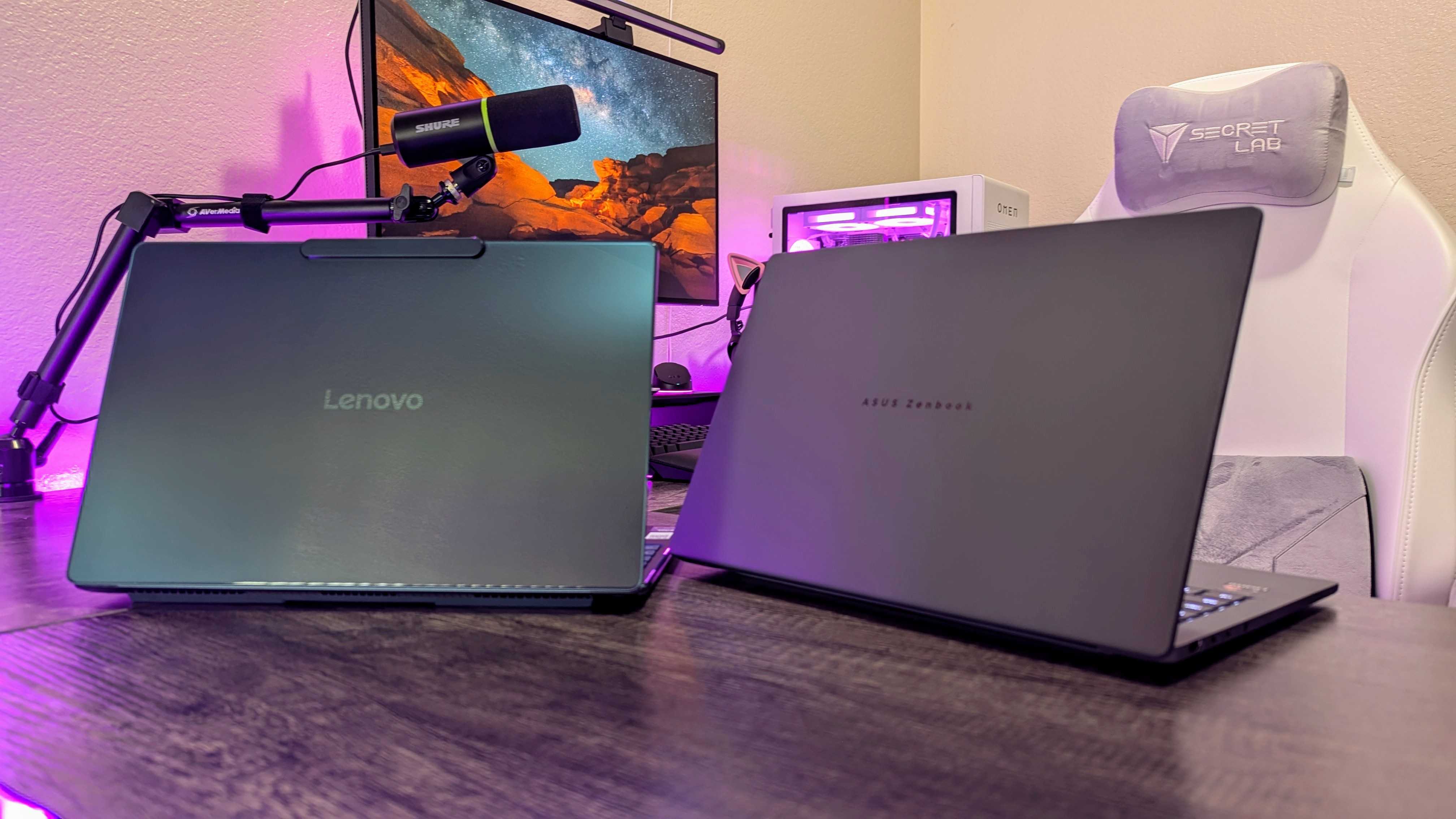During CES 2025, we saw a veritable army of new laptops announced for release in the pending months, with new hardware from Intel, AMD, Qualcomm, and NVIDIA powering these devices. There were a lot of exciting reveals, but only a handful had what it took to earn one of our coveted “Best of CES 2025” awards.
Now, two of those laptops are on my desk at once, and I’m not going to bother to contain my excitement. The understated and underrated ASUS Zenbook A14 (2025) punches above its weight (literally) to take on the sophisticated and luxurious Lenovo Yoga Slim 9i 14 (Gen 10), two laptops that couldn’t be further apart… But do share one crucial characteristic. Both of these laptops could end up being the very best we’ll see this year; at the very least, they’re certainly among the best-looking.
So, here’s a photoshoot and my quick first impressions to slake your nerdy heart’s thirst.
What do I need to know about these two laptops?
First, we have the Lenovo Yoga Slim 9i 14 (Gen 10), by far the most interesting of Lenovo’s Yoga and ThinkPad announcements at CES. This laptop is the embodiment of extravagance, pairing the internals we’ve come to know and love from recent premium Windows laptops with a gorgeous, standout design and one of the most technically and visually impressive displays ever put into a laptop.
The Yoga Slim 9i 14 is flashy and just a little impractical, especially when you consider that it starts from $1,759.99 at Lenovo. Nothing about this laptop suggests you’re getting the best bang for your buck — instead, the Yoga Slim 9i 14 charges you a premium for a more premium experience, with features and design elements you won’t find anywhere else.
Beyond the Intel Core Ultra (Series 2) chipset, AI features, and an impressive array of components, the Yoga Slim 9i also boasts the world’s first under-display camera in a laptop, an absurd OLED display with a 4K resolution and 120Hz refresh rate, and an all-glass lid that disperses light in an array of unique patterns.
Where the Lenovo Yoga Slim 9i punches everything up to 11 regardless of the cost, the ASUS Zenbook A14 (2025) that stole our hearts at CES 2025 balances a gorgeously understated design with a practical, balanced set of capabilities and an attractive price point. This is the laptop that threatens to beat out far more expensive hardware to secure our unwavering recommendation.
The foundation of the Zenbook A14 is its stupidly light design, which uses magnesium coated in ceramic to land at under 1kg of weight without compromising on build quality or durability. This laptop feels like a dummy unit in the hand, it’s that light — but it also feels like it can take a beating with no signs of creaking, flexing, or cracking. It’s the ideal combination for someone who needs an ultra-portable workhorse they can throw around, and you don’t have to give up features to achieve it.
ASUS still managed to shove a massive battery into this laptop, which works together with its ultra-efficient ARM chip to deliver ridiculous endurance. All that, and the ASUS Zenbook A14 (2025) is only $1,099.99 at ASUS with 32GB of RAM and 1TB of SSD storage, and there’s a cheaper configuration on the way. There’s also a cheaper configuration with the new 6-core Qualcomm Snapdragon X series chipset on the way.
What’s the unboxing experience like?
The Lenovo Yoga Slim 9i 14 and ASUS Zenbook A14 may be worlds apart in terms of cost, but the unboxing experience is actually quite similar. Both laptops will come in the familiar brown cardboard packaging we’re used to, but inside, you’ll find that both also come in a sleek, premium-feeling box that contains just the device and paperwork. Yes, both laptops still come with a 65W USB Type-C charger in the box, but it’s still nice to have something more compact if you need to safely store your laptop away for a while.
The Lenovo Yoga Slim 9i’s dual-tone box boasts a lovely texture and emblazoned logos, so it’s bold and bright. The ASUS Zenbook A14’s box, on the other hand, is muted and straightforward, just like the laptop inside. Both only require taking the lid off, and your new laptop will be there in all its glory. Nice and simple, and it’s all sustainable materials on both sides (no plastic, thankfully).
Which laptop has the better display?
If you’re all about that eye candy, there’s a clear winner between the Yoga Slim 9i and Zenbook A14. Don’t get me wrong, ASUS put a beautiful 14-inch OLED display inside its laptop, but it’s only 1200p and 60Hz — more than good enough for most people, but not exactly special.
Lenovo, on the other hand, gave the Yoga Slim 9i 14 one of the most impressive displays I have ever seen on a laptop. It’s also a 14-inch OLED panel, but that’s where the similarities end. You see, this is a 4K display, and it still runs at a buttery smooth 120Hz. Top that off with multi-touch support, up to 500nits of max brightness with higher peaks for HDR content, and unparalleled color accuracy (at least 100% of the sRGB and DCI-P3 color gamuts) with factory calibration, and the Yoga Slim 9i has everything it needs to take your breath away.
Oh, did I mention that the Yoga Slim 9i also boasts the highest screen-to-body ratio of any mainstream laptop of 98%? That makes this laptop almost entirely screen, complete with curved corners and a first for the laptop industry: an under-display camera. We’ve seen this in smartphones before, but the Yoga Slim 9i’s webcam is actually embedded under the 4K display and is only visible when active. Otherwise, you get a completely seamless, uninterrupted display with next to no bezels. Yeah, it looks incredible, and it gets much brighter than I expected.
Which laptop is going to last longer on a charge?
If we were taking bets on which laptop will last longer on a single charge, I wouldn’t want to put my money on the Lenovo Yoga Slim 9i 14. Look, Intel Core Ultra (Series 2) is definitely a lot more efficient than the last generation, and there’s a huge 76Whr battery inside this tiny laptop, but that’s only going to make up for all the power that bright, sharp, and fast OLED display is going to eat up.
The ASUS Zenbook A14, on the other hand, is powered by the Snapdragon X series, ultra-efficient ARM chips that sip as much battery as Intel and AMD’s latest on their best days but does so all the time and without sacrificing performance. ASUS still managed to shove a 70Whr battery into a chassis that weighs less than 1kg, and its 14-inch display is only 1200p and 60Hz, so the Zenbook A14 has all the pieces it needs to be a total battery champion.
ASUS claims up to 32 hours of battery life with the Zenbook A14; that’s optimistic, to say the least, but the only way the Yoga Slim 9i wins this battle is through wizardry or sabotage. I’ve been using both laptops long enough to know the Yoga Slim 9i may pleasantly surprise me, but the Zenbook A14 takes the cake every day of the week in terms of endurance.
Which laptop is the best bang for my buck?
Just like there was an obvious winner with the last section, so too is that true here. Of course, it’s not Lenovo that comes out on top in the “value” discussion, given the Yoga Slim 9i shamelessly pursues luxury at the expense of any pretense considering the size of your wallet. On the other hand, the ASUS Zenbook A14 gives us regular people a taste of luxury while still remembering what matters to most people buying a laptop.
The Zenbook A14 will start at just $900 with 16GB of RAM, a 512GB SSD, and the Qualcomm Snapdragon X Plus, which is nearly half the cost of where the Yoga Slim 9i 14 comes in at. That price includes the same ultra-light magnesium chassis, OLED display, and true all-day battery life. Oh, and the Zenbook A14 actually has more than two ports like the Yoga Slim 9i — you still get two USB Type-C 4.0 ports with Power Delivery and DisplayPort capabilities, HDMI 2.1, USB Type-A, and even a 3.5mm audio jack… Which Lenovo’s laptop doesn’t include.
ASUS even includes a sleeve in the box, which surprised me with its existence, sure, but also with its quality. This is a well-made sleeve with a lovely texture, real stitching, and a magnet to keep it closed.
When I reviewed the Lenovo Yoga Slim 7x 14 (Gen 9), the first and only laptop to earn a perfect 5/5 score from me, I claimed that it made recommending a single laptop to the vast majority of casual users looking for a new device stupendously easy. The ASUS Zenbook A14 (2025) just may usurp the champion in that regard.
Which of these laptops will be the best for me?
You’ll be seeing full, in-depth reviews of both the Lenovo Yoga Slim 9i 14 (Gen 10) and the ASUS Zenbook A14 (2025) from me, so stay tuned to Windows Central in the coming weeks. Of course, I don’t blame you for wanting a conclusion for my first impressions, so which of these laptops would I recommend first… will you accept “both” as an answer?
If money wasn’t an issue, then the Lenovo Yoga Slim 9i 14 clearly wins solely on the merits of its fantastic, class-leading display. Money always is an issue, though, especially when we’re talking about the vast majority of Windows laptops that are bought each year. Spoiler alert: they don’t cost $1,800. For all the people who want a performant, long-lasting, and portable laptop that they can trust to survive years of abuse, the Yoga Slim 9i is simultaneously overkill and a little compromised, thanks to prioritizing form over function.
The ASUS Zenbook A14, on the other hand, weighs less, lasts longer, and hundreds of dollars less. I’d be an idiot to skip over that last point. Of course, it’s all moot, considering almost no one will be flipping the coin between these two laptops. The Yoga Slim 9i and Zenbook A14 are only together here because they’re among the most anticipated laptops announced so far this year, and also, they just happened to land on my desk at the same time.
Anyway, I’m going to return to my nerd fest over this beautiful hardware. Watch out for my reviews.


